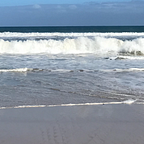The Push —the ‘Convoy to Canberra’ and the anti-mandate movement
I spent last weekend (12/13 Feb) in Canberra because I wanted to check out firsthand the so-called ‘Convey to Canberra’ and see the type of people attending the protest. Like many others, I am deeply concerned about the emergence of neo-Nazi groups and the polarisation of our society. And I worry that simply ignoring or even ridiculing the protestors’ grievances will push them further towards the far-right and accelerate their journey down an extremist path.
Pauline Hanson pushed the line that Australia was “in danger of being swamped by Asians” and her populist One Nation Party quickly gained a following and has contributed to normalising racism and xenophobia. John Howard didn’t hesitate to drum up fear over Aboriginal land rights and asylum seekers coming to Australia.
Politicians are masters of using ‘the other’ to generate fear, suspicion, and fractures within society. In Sri Lanka, where I was born, the use of race politics resulted in a 30-year long violent conflict that fuelled extremism and inter-cultural fear and hatred, and continuing tension between the three main ethnic communities that can be seen to this day.
From what I saw, last Saturday’s Canberra protest was peaceful, with a festive atmosphere of sorts. The common threads that brought everyone together seem to be the opposition to the covid vaccine mandates and with it, a distrust of politicians and government. There were lots of families and older generations, and while there were some troublemakers, the vast majority of the protestors seem to be committed to a peaceful movement against the mandates.
However, media coverage of the protest wasn’t positive. Initial reports that emerged on Saturday foregrounded the handful of arrests or a charity book fair being forced to close because of the disruptions caused by the protest camp.
A bulk of the mainstream media narratives portray the protestors as naive, selfish, and being manipulated by fascists. Interestingly, these narratives are echoed by Australia’s progressive/left communities too. Covid19 protest satire is also growing and while some of it is funny, it can also be insulting to the protestors. There are far-right elements playing a pivotal role in the protests, and the whole thing, including the speakers and the music selection at the stage in front of Parliament House appeared to be tightly stage-managed to portray the protest as a peoples’ movement, as opposed to a political party rally. However, by portraying the people who attended the protest (who believed they were part of a movement) as far-right or a misguided minority is a dangerous approach that won’t make them go away.
Ridiculing and dismissing a large number of people (likely to be in the hundreds of thousands) who feel they have genuine grievances will result in pushing them further into alternative and right-wing media spaces, where their worldview and actions are given validity. Eventually, if not already, they will sympathise and support far-right political candidates and parties. And with elections coming up in Australia — there is much at stake.
